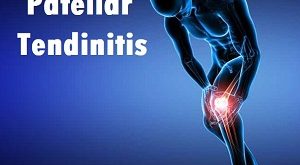Definition
Peripheral Neuropathy also called peripheral neuropathy refers to any condition that affects the normal activity of the nerves of the peripheral nervous system. The peripheral nervous system is the network of nerves that connects the central nervous system the brain and spinal cord to the rest of the body.
The peripheral nervous system is made up of 3 types of nerves, each with an important role to play in keeping your body healthy and functioning properly.
- Sensory nerves carry messages from your senses through your spinal cord to your brain. For example, they tell your brain you are touching something hot.
- Motor nerves travel in the opposite direction. They carry messages from the brain to your muscles. They tell your muscles to move you away from the hot surface.
- Autonomic nerves are responsible for controlling body functions that occur outside our control, such as breathing, digestion, heart rate, and blood pressure.
Neuropathy results when nerve cells, or neurons, are damaged or destroyed. This distorts the way the neurons communicate with each other and with the brain. Neuropathy can affect 1 nerve or nerve type, or a combination of nerves.
Types of peripheral neuropathy
Classified on the basis of the onset of the disease there is:
- Acute peripheral neuropathy which is a sudden or rapid onset of neuropathy.
- Chronic peripheral neuropathy develops more gradually and persists for a longer time.
Classified on the basis of the number of nerves that are involved there is:
- Mononeuropathy when only one nerve or nerve group is damaged.
- Polyneuropathy when all the nerves are damaged. This is the most common type of neuropathy. It starts by affecting the longest nerves and so usually the feet are first affected. It then starts spreading to the shorter nerves and gradually affecting the arms.
Peripheral Neuropathy Risk factors
Thirty percent to 40 percent of patients treated with chemotherapy develop some degree of peripheral neuropathy. Doctors cannot predict who will develop peripheral neuropathy, but some things make you more likely to develop it:
- Having had chemotherapy, radiation, or surgery before
- Needing a high dose or long course of treatment
- Taking more than 1 drug that can cause neuropathy
- Having a history of alcohol abuse
- Being a diabetic
- Having HIV or AIDS
- Having severe malnutrition
- Having multiple myeloma, lymphoma, or lung or breast cancer
- Having nerve damage from previous injury or illness
Causes
In the United States, the most common cause of peripheral neuropathy is diabetes. According to the American Diabetes Association, 60 to 70 percent of people with diabetes will develop neuropathy within their lifetime.
Causes of peripheral neuropathy
Other causes of peripheral neuropathy include:
Certain medications including some chemotherapy drugs.
Heredity: Some people have a family history of peripheral neuropathy.
Advanced age: Peripheral neuropathy is more common as people age.
Arthritis: Certain type of arthritis, especially involving the back, can cause peripheral neuropathy.
Alcoholism: According to the US National Library of Medicine, up to half of all long-term heavy alcohol users develop peripheral neuropathy.
Neurological disorders: Certain neurological disorders, including spina bifida and fibromyalgia, are associated with peripheral neuropathy.
Injury: Acute injury to the peripheral nerves may also cause peripheral neuropathy.
Symptoms of peripheral neuropathy
The symptoms of peripheral neuropathy will depend on the nerve involved and the level of damage sustained. One of the most common symptoms are as follows:
- Numbness, tingling, pins, and needles,
- Hot/Burning sensation,
- Abnormally sensitive skin,
- Electric shock pain,
- Generalized pain,
- Muscle weakness,
- Loss of balance
Neuropathy will generally worsen over time and it can lead to further complications and more pronounced symptoms.
Complications
Complications of peripheral neuropathy can include:
Burns and skin trauma: You might not feel temperature changes or pain in parts of your body that are numb.
Infection: Your feet and other areas lacking sensation can become injured without your knowing. Check these areas regularly and treat minor injuries before they become infected, especially if you have diabetes.
Falls: Weakness and loss of sensation may be associated with a lack of balance and falling.
Diagnosis and test
The physician will review the medical history of the patient, including signs & symptoms, lifestyle, drinking habits, exposures to toxins and a family history of the nervous system (neurological) disorder.
Neurological examination: Your specialist may check ligament reflexes, muscle quality and tone, your capacity to feel certain sensations, and stance and coordination.
Blood tests: These can recognize vitamin insufficiencies, diabetes, unusual resistant capacity and different signs of conditions that can cause (Peripheral) fringe neuropathy.
Imaging tests: CT or MRI outputs can search for herniated plates, tumors or different variations or abnormalities.
Nerve function tests: Electromyography records the electrical activity in muscles to recognize nerve harm. A test sends electrical signs to a nerve, and an anode set along the nerve’s pathway records the nerve’s reaction to the signs (nerve conductions studies).
Other nerve function tests: These might incorporate an autonomic reflex screen that records how the autonomic nerve filaments (fibers) function, a sweat test, and sensory tests that record how you feel touch, vibration, cooling, and warmth.
Nerve biopsy: This involves removing a small portion of a nerve, generally a sensory nerve, to look for abnormalities.
Skin biopsy: Removes a small portion of skin to look for a devaluation nerve endings
Treatment and medications
The treatment for peripheral neuropathy depends on its cause. The first step in treatment is, therefore, to look for the cause.
- Vitamin deficiencies can be corrected.
- Diabetes can be controlled, although control may not reverse the neuropathy. The goal with diabetes is early detection and adequate treatment to prevent the occurrence of neuropathy.
- Neuropathies that are associated with immune diseases can improve with treatment of the autoimmune disease.
- Neuropathy caused by nerve entrapment can be treated by physical therapy, injections, or surgery.
- Prompt treatment with sympathetic injections can minimize the chance of shingles progressing to postherpetic neuralgia.
If a specific treatment isn’t available, the pain of the neuropathy can usually be controlled with medications.
In some cases, over-the-counter pain relievers can help. Other times, prescription medicines are needed. Some of these medicines are:
- Mexiletine, a medicine developed to correct irregular heart rhythms
- Antiseizure medicines, such as gabapentin, phenytoin, and carbamazepine
- Some classes of antidepressants including tricyclics such as amitriptyline
Lidocaine injections and patches may help with pain in other cases. And in extreme cases, surgery can be used to destroy nerves or fix injuries that are causing neuropathic pain and symptoms.
Physical therapy can treat weakness and muscle loss. It can also treat problems with balance. Some people may need splints or braces to help them walk.
Other types of help
If your symptoms are mild, you may not need any additional help in managing them. However, if you have more troublesome symptoms, support is available to help you cope with them.
Physiotherapy
A physiotherapist can offer treatment and advice if you’re having problems with:
- Coordination
- Muscle weakness
- Balance
- Walking
Occupational therapy
If you’re finding it hard to do daily tasks because of peripheral neuropathy, you can ask to be referred to an occupational therapist. They can assess your needs and recommend appropriate aids and equipment to help you. There are organizations that provide equipment for people who need help with daily tasks
Prevention and management
- Take care of your hands and feet. Wear well-fitting protective shoes and keep hands and feet warm.
- Be careful when getting into the bath or shower and check the temperature of the water first.
- Do regular, gentle exercise to keep your muscles toned and to improve circulation.
- Low resistant bed clothing such as silk sheets can be more comfortable.
- Eat a well-balanced diet.
- Avoid falls by reducing the risks in your own home.
- Ask for a referral to an occupational therapist to look at possible assistive devices and assess any risks around your home.
- Adopt good posture and avoid sitting with legs crossed for long periods of time.
- Transcutaneous electrical nerve stimulation (TENS) machines can sometimes help reduce your level of pain by delivering tiny electrical impulses to specific nerve pathways.
- Complementary therapies such as acupuncture, reflexology and gently massage as well as relaxation techniques may all help to relieve some of your symptoms.
 Diseases Treatments Dictionary This is complete solution to read all diseases treatments Which covers Prevention, Causes, Symptoms, Medical Terms, Drugs, Prescription, Natural Remedies with cures and Treatments. Most of the common diseases were listed in names, split with categories.
Diseases Treatments Dictionary This is complete solution to read all diseases treatments Which covers Prevention, Causes, Symptoms, Medical Terms, Drugs, Prescription, Natural Remedies with cures and Treatments. Most of the common diseases were listed in names, split with categories.







